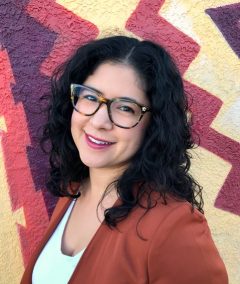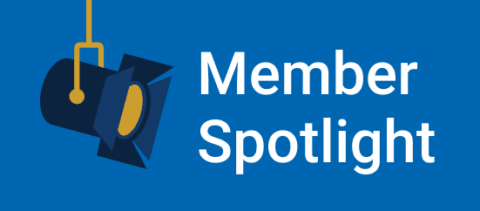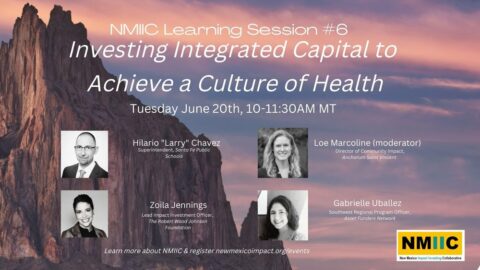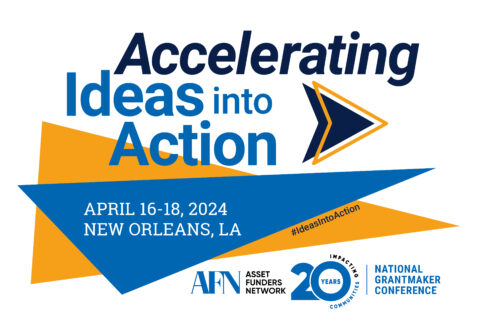Philanthropic and Financial Institutions Have a Role to Play in Closing the Racial Wealth Gap in New Mexico
In the wake of the COVID-19 public health crisis and economic fallout, we must fight for the right to thrive by protecting and rebuilding the assets of all New Mexicans and changing the exclusionary systems that created the racial wealth gap. The New Mexico Asset Funders Network (NMAFN) recognizes this moment as an opportunity for philanthropic and financial institutions to increase investment in programs, policies, and systems that center economic justice.
As the third most diverse state in the nation, home to 23 sovereign indigenous nations, the racial wealth gap hits home for Indigenous New Mexicans. Here, 29% of Native American families live in poverty while only 7.5% of their white counterparts are similarly situated. Our Native American communities are resilient, but it is morally irresponsible and economically untenable to ignore the inequities created by the racial wealth gap.
COVID-19 amplifies the two-way relationship between health and wealth. Native Americans represent 56% of the COVID-19 cases in New Mexico, while constituting 8% of the population. This is due to health disparities created by systemic poverty. And, as local, state, and federal governments roll out broad economic recovery efforts to this population, existing systems blunt their effect by redirecting money to predatory businesses and practices. We cannot look away from the human casualties caused by a problem we have the power to solve: economic inequality.
The good news is that New Mexico has homegrown programs, products, and policy prototypes for the role philanthropic and financial institutions can play to close the racial wealth gap and create systemic change.
For example, predatory lenders target native communities. In New Mexico, 64% of small-loan lenders are located within 15 miles of Native lands that comprise less than 10% of the overall geography. Meanwhile, interest payments constitute nearly half of the total amount paid by borrowers of small high-interest loans. Much like tax refund loans, which extract millions in interest and fees from New Mexican families, these predatory businesses stand to extract wealth from COVID-19 relief efforts.
But financial institutions can help. NMAFN partner Guadalupe Credit Union supports predatory lending relief by refinancing predatory loan agreements and providing financial coaching, wherein borrowers set goals and receive support in order to grow assets in ways that are impactful to them. Broader implementation by other financial institutions would increase the money available to these populations.
Similarly, securing access to capital at a fair rate is critical to growing the economic power of Native populations. A program initiated by Native Women Lead (NWL), the Matriarch Response Loan Fund, provides zero-interest, delayed-repayment loans to Native women entrepreneurs in the amounts of $2,000-$5,000, and is supplemented with technical assistance and financial literacy courses. According to NWL, two-thirds the breadwinners in Native families are women, so it is crucial that they have access to intentional, equitable, and patient capital. This loan fund is an iteration of the three-year-old Co-op Capital program, co-designed with the Native-owned firm, Roanhorse Consulting, which creates access to affordable loans for groups that are shut-out of traditional financial avenues by leveraging trusted relationships between partner organizations and individuals to replace traditional lending metrics.
Because these lending practices do not result in profit for lenders, they require cash investments from philanthropy. This partnership between lenders, philanthropic institutions, and non-profits make equitable access to capital possible.
These are two examples of the asset building interventions happening in New Mexico. Other interventions include: tracking the race and ethnicity of those who apply for and receive loans; cashing stimulus checks without fees or requiring accounts; and making philanthropic investment in programs that provide people of color with a combination of grants, loans, and technical assistance.
These measures were salient before COVID-19. Now, they are imperative.
For relief and recovery to be effective, we must create alternatives to exploitative practices, double our investment in solutions that build wealth, and initiate these partnerships in solidarity, rather than charity. These interventions are meaningful steps toward closing the wealth gap not just with our Native American populations, but all populations.



